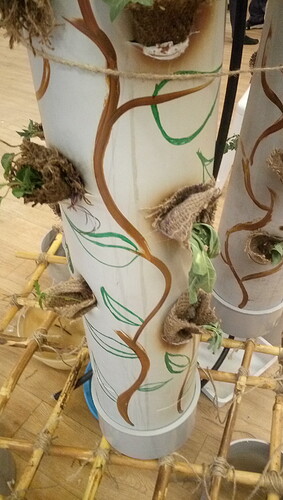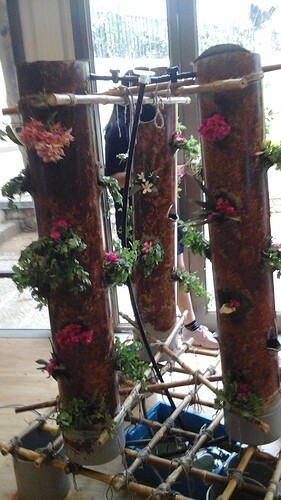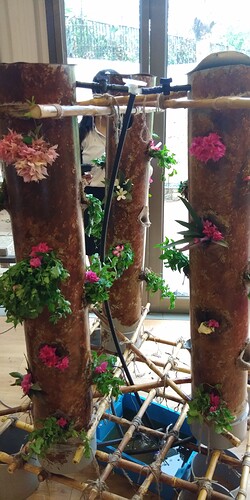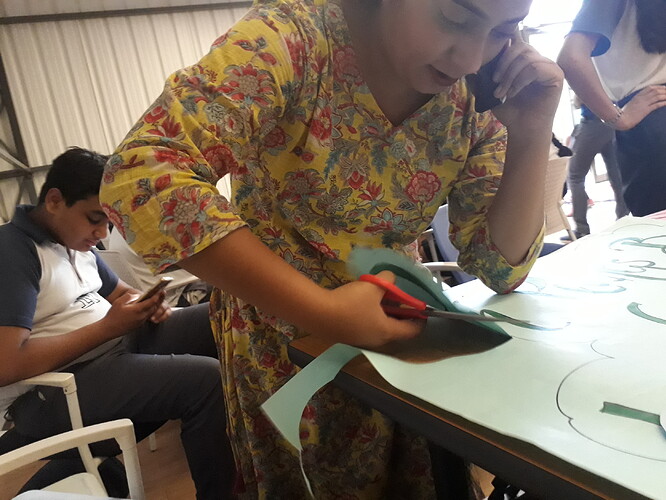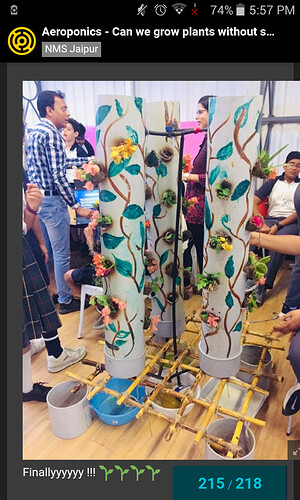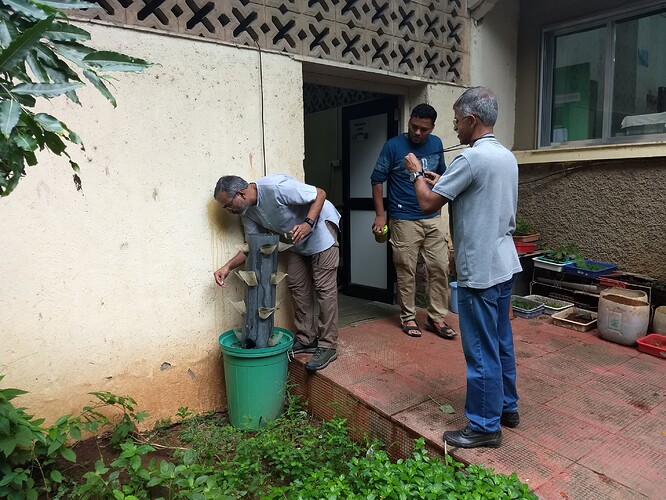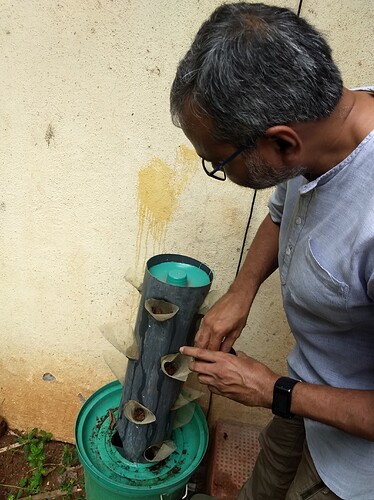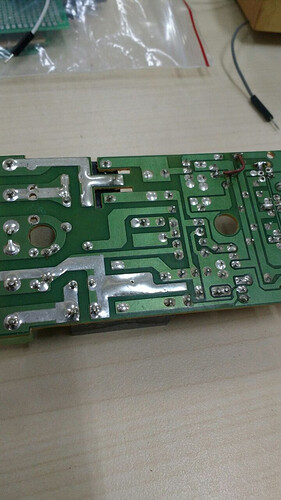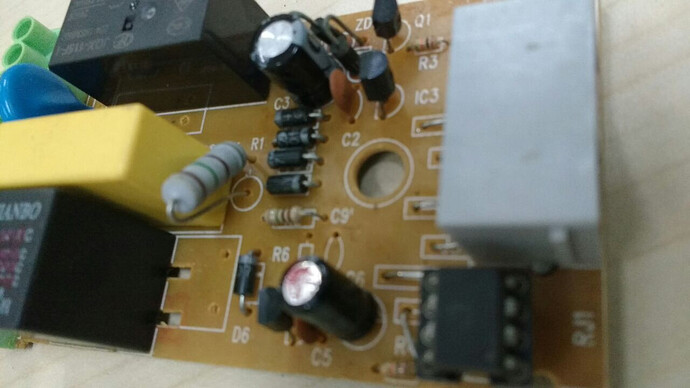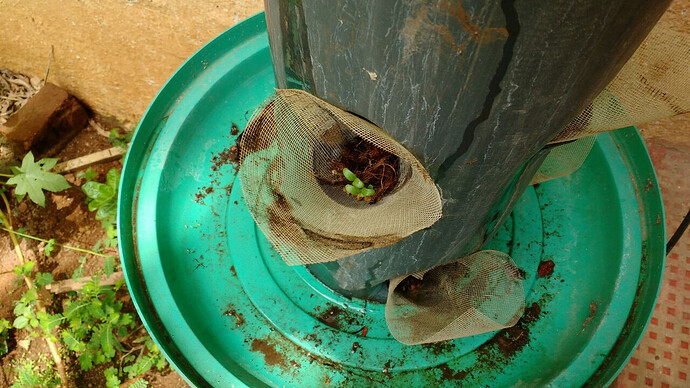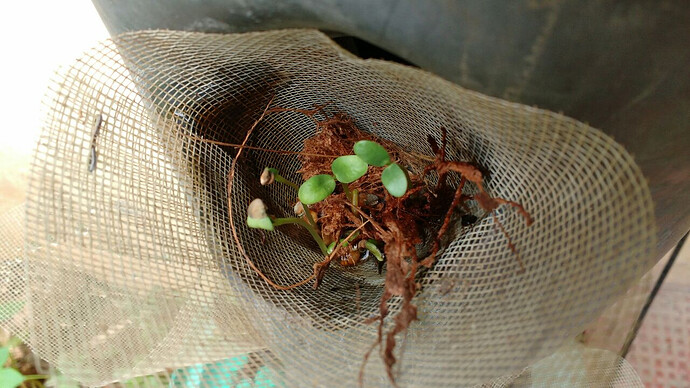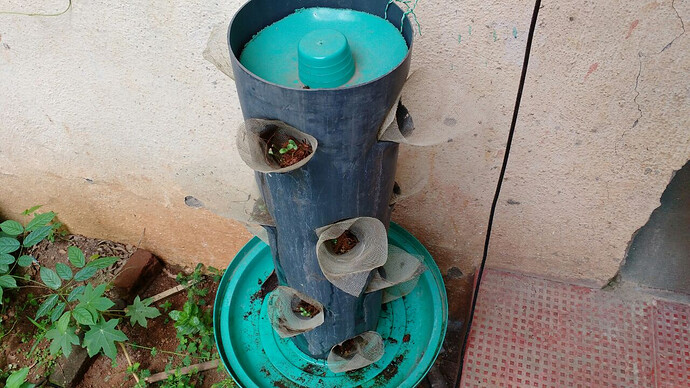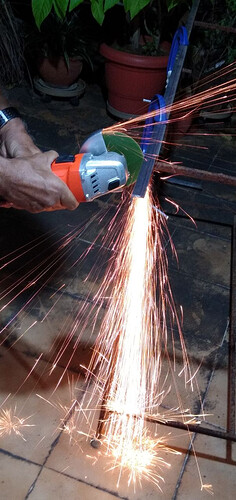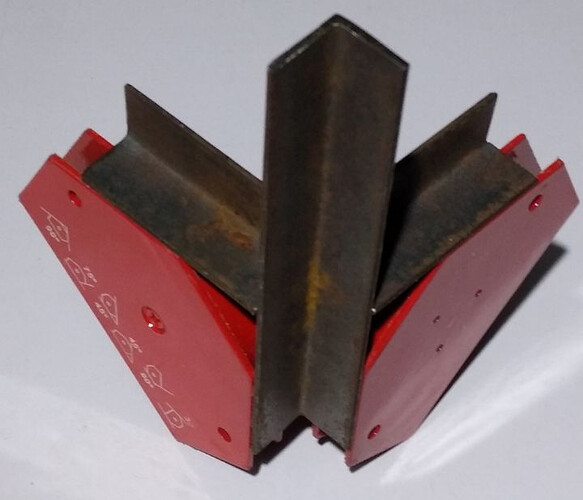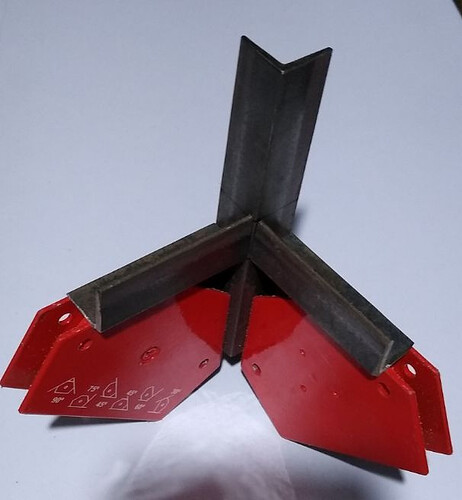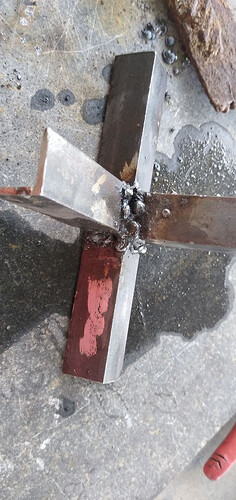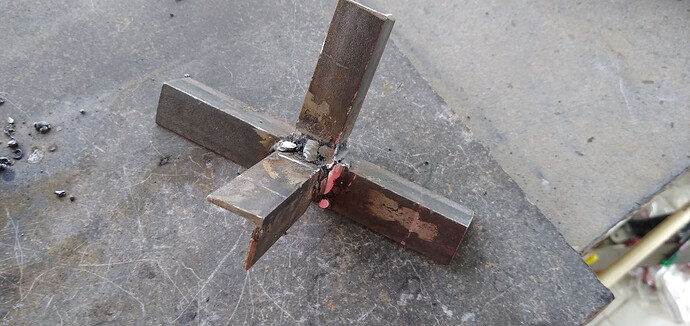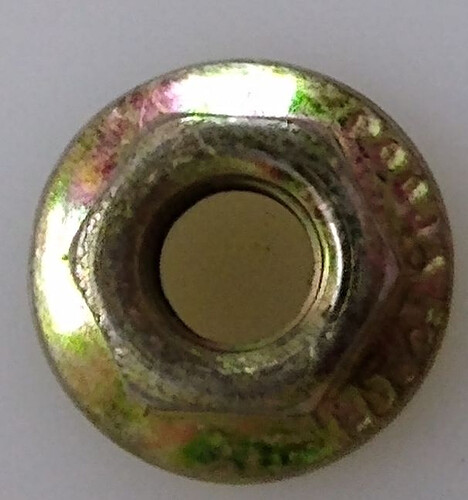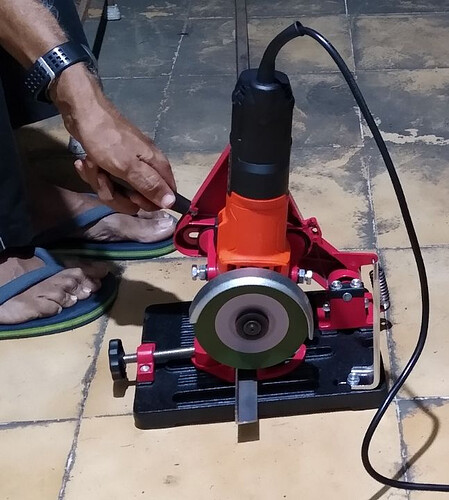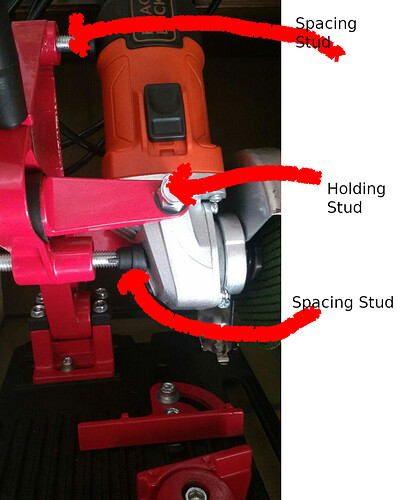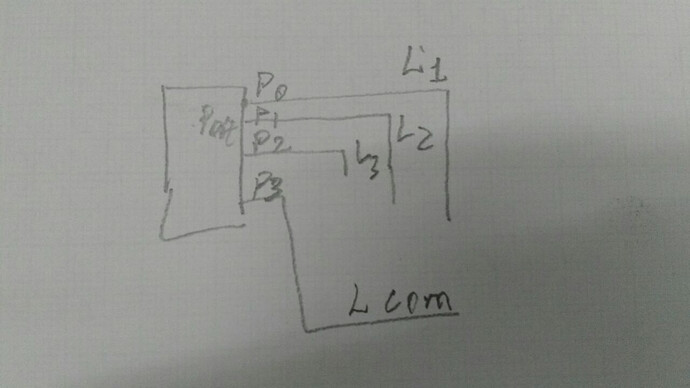The timer circuit relay for driponics was chattering. This circuit has 2 relays. We use one and the other is idle. The transistor for operating the unused relay was being turned on randomly, as it’s input was floating and picking up stray electrical noise. I grounded the unused input.
2nd imae shows the ATTiny13 microcontroller programmed as a simple timer tacked onto the pcb.
So do we need an electric motor for the continuous spray of nutrients rich water?
However it need not be continuous. If it is drip one needs to pump between 5 to 30 secs per minute. If one is spraying one needs to spray for as low as 5 secs per 5 minutes. The actual timing depends on plant type, growth cycle, ambient humidity and temperature and incase of spray, spray droplet size.
Revamp of aeroponics.
Instead of one tower at a fixed location, 4 towers on a wheeled frame.
I am using 20mm x 1.8mm square pipe as the frame. To allow easy storing when not in use, I will make corner elbows on which the pipe will be mounted.
For the corner elbows the preferred design is to insert the elbow arms into the pipe. Which requires the elbow dimensions to be smaller than the pipe id. However available angle section is the same size as pipe od i.e. 20 mm. Which then requires additional work of grinding the angle to size. To avoid this additional work therefore we will use the elbow on the outside.
First we cut the angle sections using angle grinder with cutting wheel: 2 pieces of 60mm for x and y axis and 1 piece of 14 mm for z axis.
Then we use magnetic clamps to hold our pieces in the correct position of $90^\circ$ . This is critical. Any error and one will not have all arms at $90^\circ$
Next we weld the pieces.
Two sides have functional welds. One side is not welded. The welds show my utter lack of skill. This is the 6th attempt.
After chipping off the slag and grinding one can see the welded and unwelded portions of the joint.
I should be using 1.8mm rods. However I have only 2.5mm rods. The thumb rule is rod dia same as material thickness, in this case 2mm. The welds are ugly but functional and strong.
Next step will be to drill holes for screwing the long members onto the elbow. We can thread the holes - a very slow and boring process, or weld flange nuts. We will use flange nuts. The flange nuts will also provide additional strength.
M5 flange nut purchased at Lohar chawl Mumbai. This costed Rs.130/- per hundred.
On Amazon the cost is substantially higher.
Since we have 24+ pieces to cut I decided to buy a angle grinder stand that converts an angle grinder into a chop saw. This will speed up work and provide accurate cutting, especially when one needs very straight cuts or cuts at a specific angle.
There are some problems though.
The image above marks two spacing studs and one of two holding studs. The second holding stud is exactly below the grinding tool, hence not visible.
The holding studs do not prevent the tool from pivoting on the holding axis. This will cause the cutting wheel to cut at an angle instead of $0 ^\circ$. To prevent such an issue 2 spacing studs are provided. They push against the sides of the tool. However this is not sufficient to position accurately and causes the wheel to tilt by approx 2 degrees in the z plane.
It would be much better to anchor the tool to the upper spacing stud.
I will try to fix a nut on the tool so that the upper M10 spacing stud can screw into the nut and hold the tool at the precise position as well as anchor it far more securely. Remember that the tool rotates at very high RPM and hence causes vibrations when cutting.
My postulate about the spacing studs being the cause of inaccuracy proved to be correct.
I made 3 cuts by holding the upper spacing stud and the grinding tool during operation.
All 3 cuts proved to be 100% true - perfectly straight and at 90 ^\circ.
Will make suitable modifications to the stand.
We have some broken glassware in the lab (like beakers, bottles, test tubes). Could these serve any purpose for your aeroponics project. This way broken glass could be reused too.
One of the reliability issues with measuring water levels is corrosion of simple contact type water probes. Such probes are extremely low cost and simple to interface. However they suffer from electro migration resulting in corrosion and failure.
One method of preventing corrosion is to alternate the polarity of the probe.
Here is a probable schematic
P0 to P2 are some ports connected to each level probe ( with appropriate resistors). P3 is the common and is usually connected to ground. But in this schematic it is connected to a port.
Your software will pull P3 low and check P0 - P2 for level. Next, you will pull P3 high and make P0 - P1 low for the same amount of time that you spent to check P0 to P2 for level.
When you are not checking P0 - P2, make them P0-P2 as well as P3 low.
When you made P3 high and P0 to P2 low you reversed the polarity of current flow and consequently reversed the electro migration.
Leave all ports in a low state when you are not polling for levels. Ideally this will leave P0 to P3 at the same potential preventing any current and hence drastically reduce corrosion.
We are implementing driponics project. This is my first post.
That is very good. How are you preparing to do your project? What materials and tools are required?
